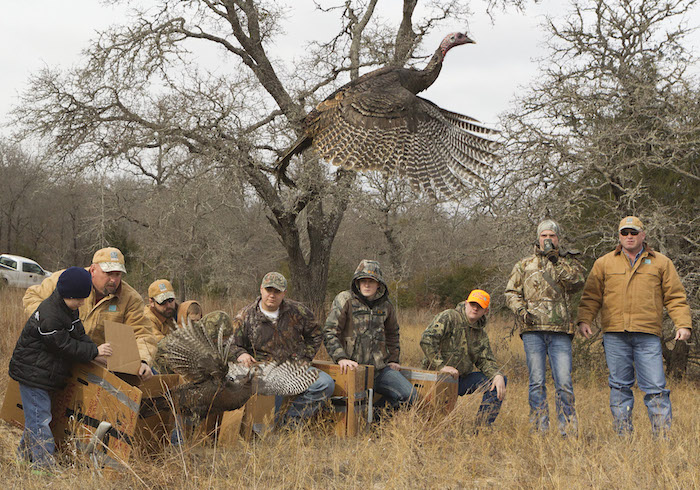Wild turkeys are found in robust numbers in many areas of Texas, but there are locations where turkey stocking is warranted. This is especially true in the eastern half of the state, where eastern turkey once roamed. Some of the turkey populations originally found there never bounced back after they were initially wiped out by unregulated hunting and changes in habitat. Now, those same areas are prime candidates for turkey stocking if property owners are willing and can work together.
For stocking stockings to work, however, it is going to require more large landowners to become involved. Land use practices of the past on commercial land, private tracts and even national forests have created challenges that are not favorable for turkey, but the turkey habitat found in some parts of the eastern half of Texas have improved dramatically. This mean stocking and, eventually, more turkey hunting in east Texas. But let’s not put the cart before the horse.

Source: “It was a cold, grey morning. Hardly the chamber of commerce type weather to welcome newcomers to the state. But there they were, 24 eastern wild turkeys from Tennessee and Missouri being liberated from the boxes that had been their homes for about 48 hours.
Once free, the 22 hens and two jakes flew off in all directions into the pinelands of Trinity County. Their new home is the White Rock Creek drainage situated between the Trinity River to the west and the Neches to east.
The release was the first round of this year of Texas Parks and Wildlife Department’s efforts to re-establish eastern wild turkeys in the state. The department released 248 on three sites in 2014. They will eventually release 80 on the White Rock Creek site, the only one approved for stocking this year.
To qualify for turkey release, a site must be at least 10,000 contiguous acres and meet stringent habitat requirements. It is a guideline that has proven harder to meet than expected when the department began its super stocking approach to wild turkey restoration.
The program is a true cooperative between TPWD and the states that provide the birds, the National Wild Turkey Federation that underwrites transportation costs and hunters whose upland game bird stamp supplies GPS tracking devices and pays for other portions of the project.
The often unmentioned key is landowners who not only allow the department to release turkeys on their properties, but also invest in the habitat management work necessary for the birds to thrive. Last year that included both a private and corporate landowner, along with a state wildlife management area.